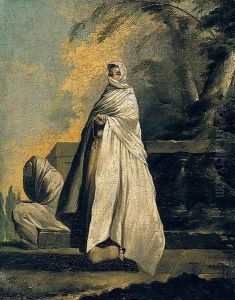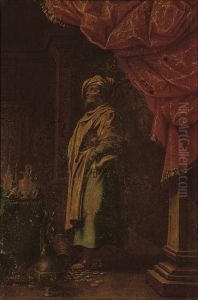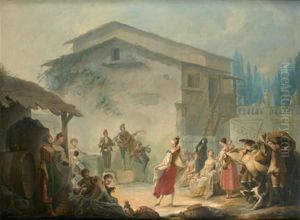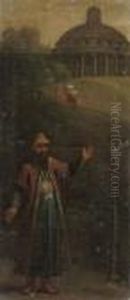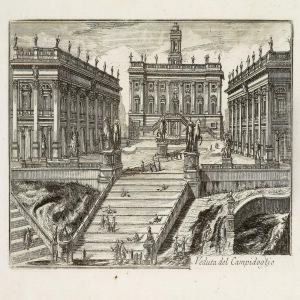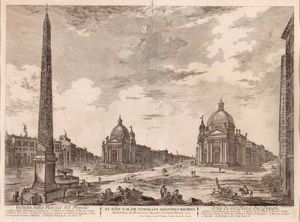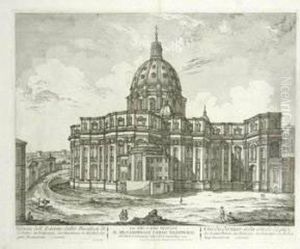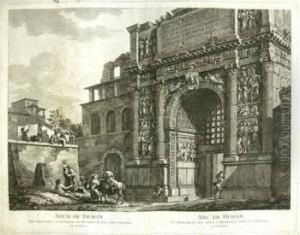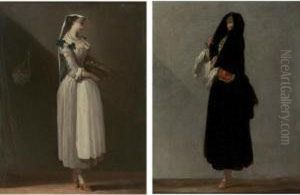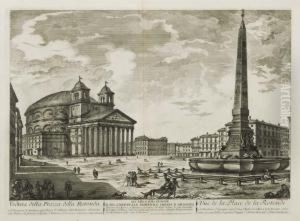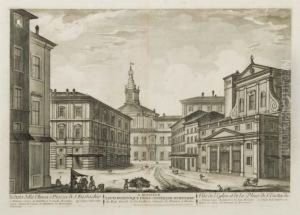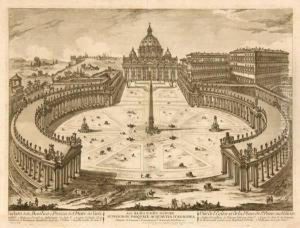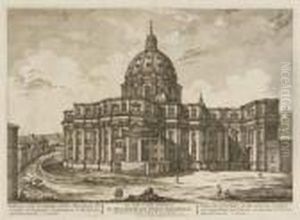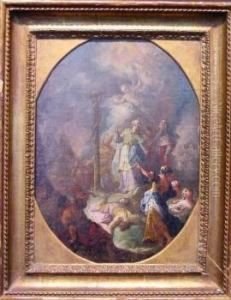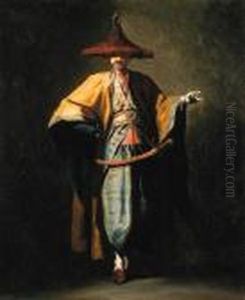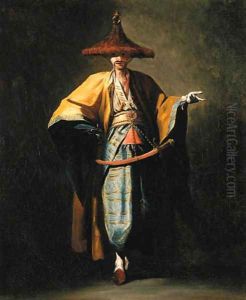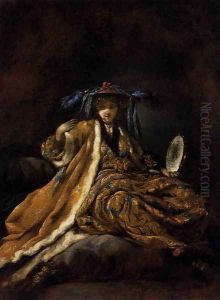Jean Barbault Paintings
Jean Barbault was a French artist known for his paintings, drawings, and engravings. Born in 1718 in Valence, Barbault is particularly recognized for his works depicting scenes of Italian life and architecture. He moved to Rome early in his career, which had a profound influence on his artistic style and subjects.
In Rome, Barbault became associated with the French Academy in Rome and was influenced by the works of the classical antiquity and the Renaissance. His interest in the Italian way of life, its ruins, and landscapes became the central theme of many of his works. He produced a series of engravings that captured the essence of Italian ruins and their surroundings, which were highly appreciated for their detail and accuracy.
Barbault's works are characterized by a keen eye for detail and a delicate handling of light and shadow, which he employed to enhance the romantic appeal of his subjects. His paintings often reflected a warm, golden light, which became a signature element of his work and helped to create a sense of nostalgia and reverence for the ancient world.
Despite his talent and the beauty of his works, Jean Barbault remains a relatively lesser-known figure in art history. His life was cut short when he died in 1762, at the age of 44. Over his relatively brief career, he managed to capture the spirit of the Italian landscape and culture, leaving behind a body of work that continues to be appreciated by art historians and collectors for its charm and historical value.
